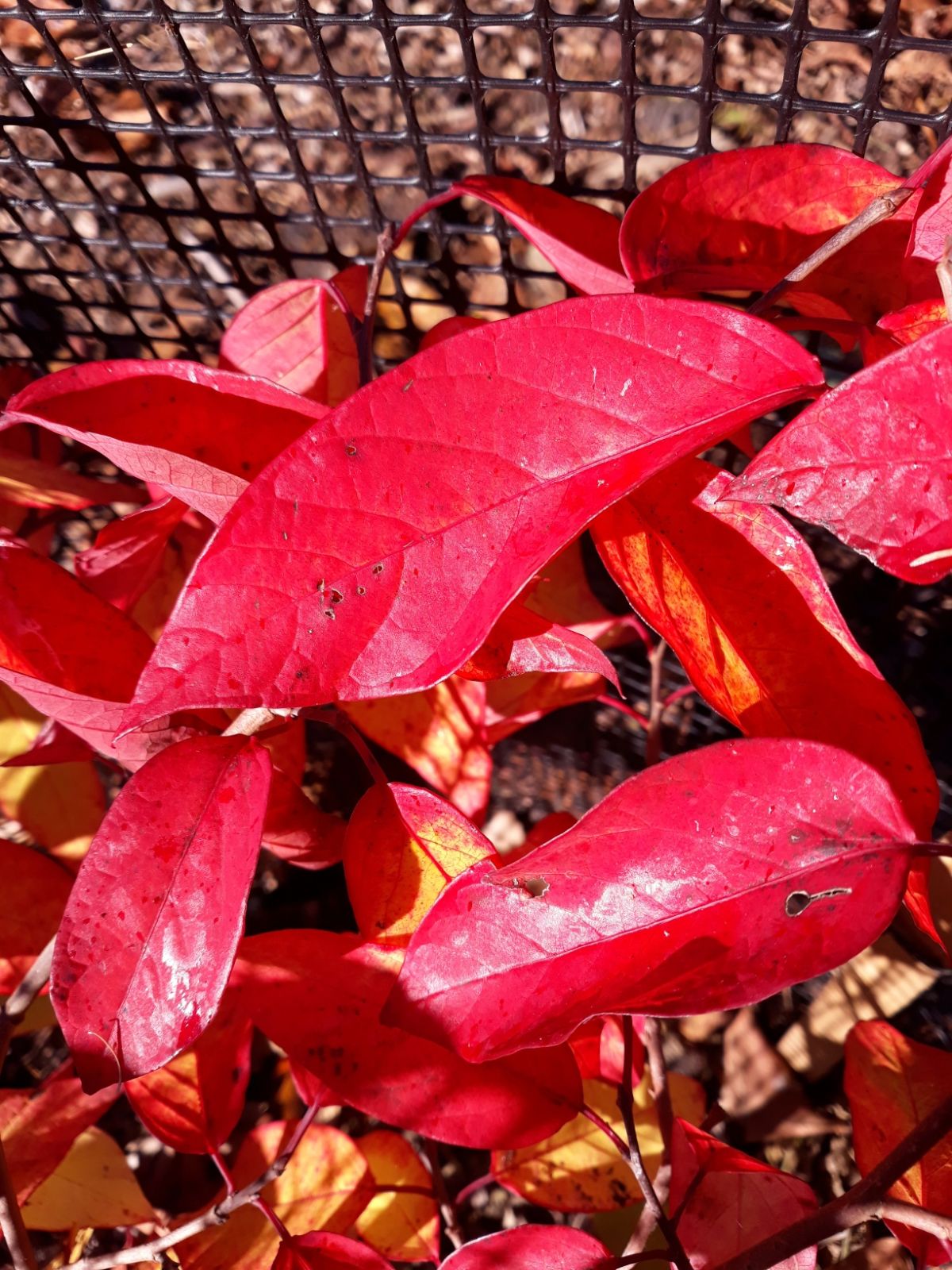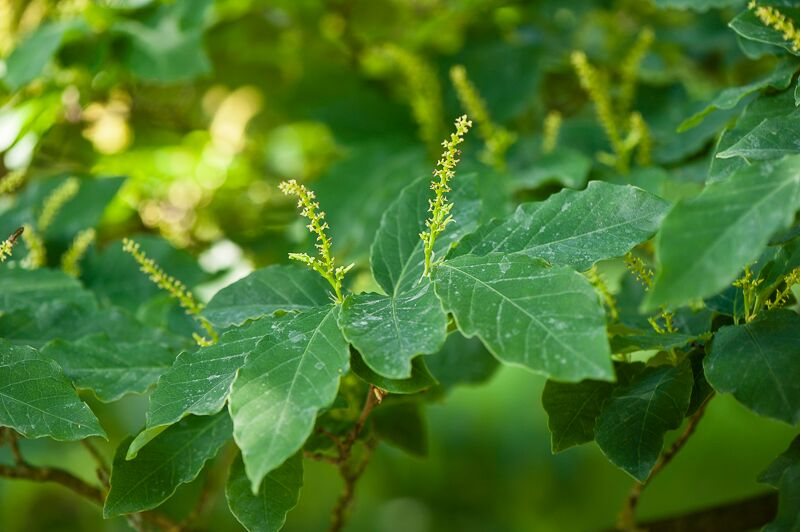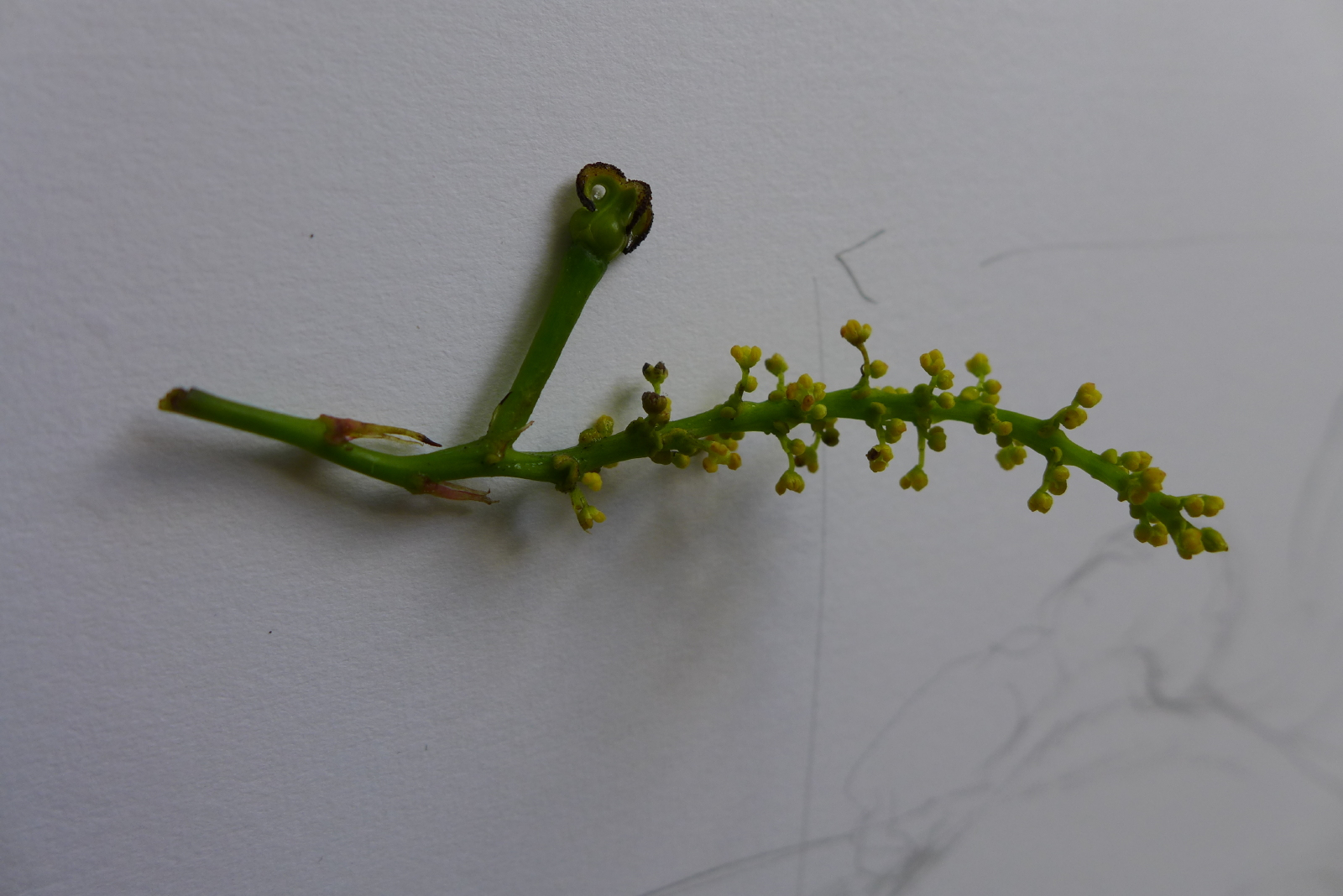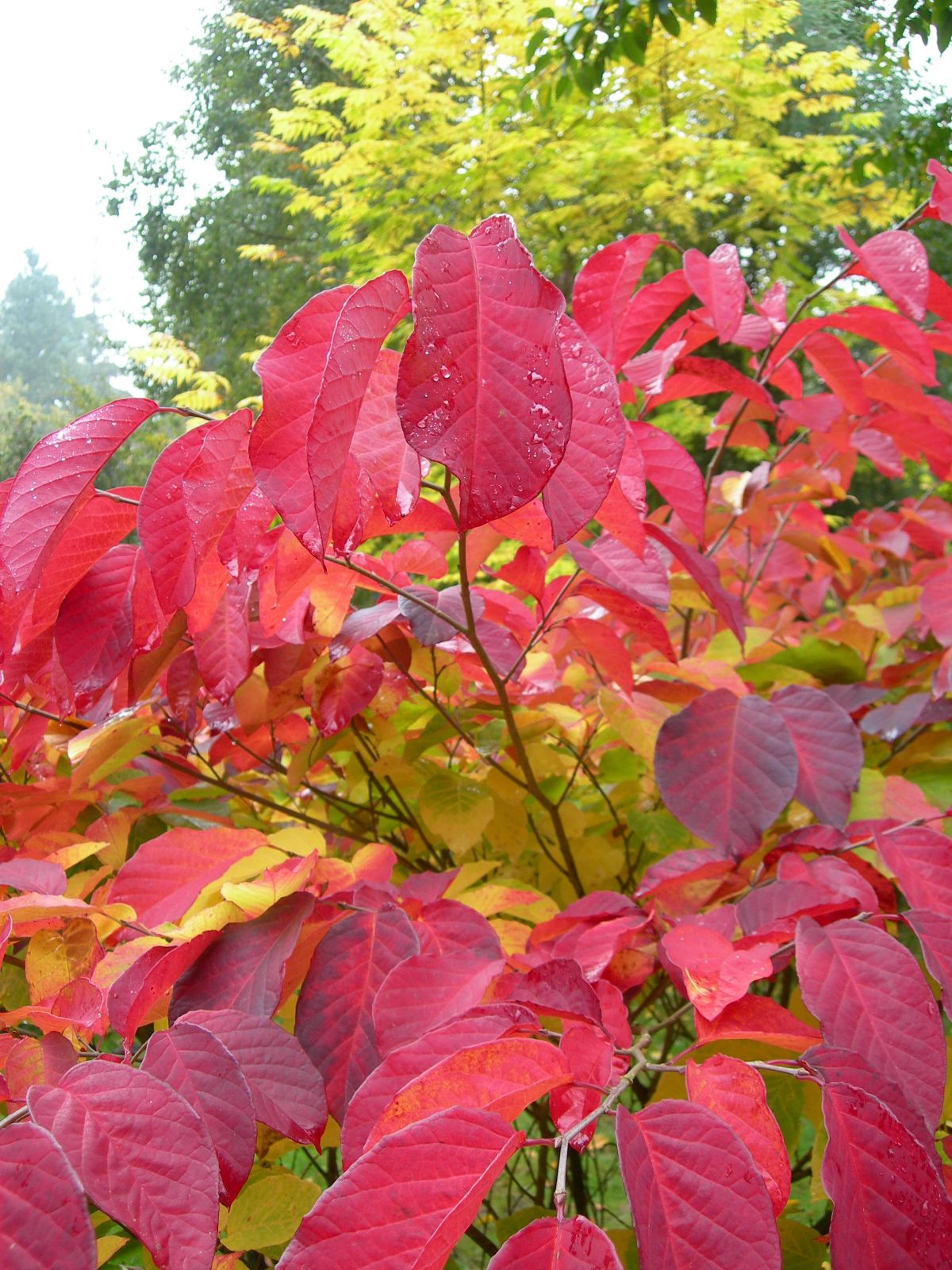Neoshirakia
Credits
Harry Baldwin (2018)
Recommended citation
Baldwin, H. (2018), 'Neoshirakia' from the website Trees and Shrubs Online (treesandshrubsonline.
Family
- Euphorbiaceae
Synonyms
Deciduous shrubs or small trees with alternate, ovate, ovate-oblong or elliptic leaves with two glands at the base of the midrib. Inflorescences terminal, with female flowers at base, males above and sometimes male throughout. Male flowers pedicellate; bracts ovate to lanceolate, basal glands ovoid; stamens serrulate (2–)3, usually exceeding the calyx; anthers globose, slightly shorter than the filaments. Female flowers pedicellate; bracts divided almost to base, lobes lanceolate, 2–3 mm, the central lobe usually larger, lateral lobes each one-glandular, pedicels stout, calyx lobes three, triangular; ovary ovoid; styles connate at base; stigma three, revolute. Fruit capsules triangular-globose, seeds oblate, 6–9 mm in diameter, with brown spots and stripes (Li & Esser 2008).
Neoshirakia is a small genus within the Hippomaneae tribe of the Euphorbiaceae, native to parts of central and southern Japan (including the Ryukyu Islands), central and southern China and the Korean peninsula. It has a complex nomenclatural history, and the single cultivated species is still most familiar under the older name Sapium japonicum. Sapium was something of a dumping-ground for difficult members of the Hippomaneae until the mid-20th century, when revisions began to break it up, and it is now restricted to 25 species in the Neotropics (Mabberley 2017). This species was placed in Shirakia, but this was later found to be synonymous with a fossil fern, necessitating the coining of Neoshirakia in 1998. A full account of the tangled nomenclatural history is given by Baldwin (2016).
Only Neoshirakia japonica is known to be in cultivation: it is one of the most spectacular shrubs for brilliant red autumn colour, and deserves more attention.





